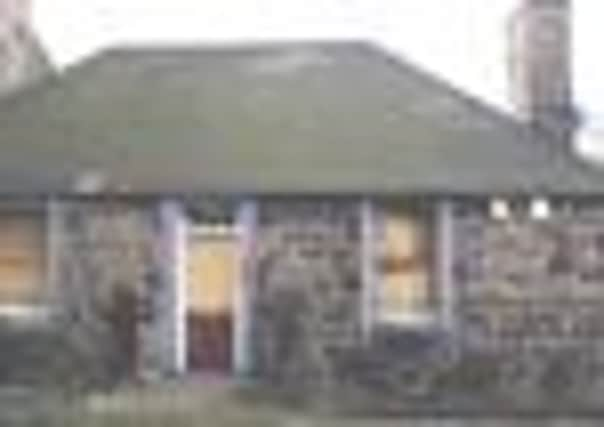Historic cottage to be rebuilt stone by stone (minus the satellite dish and burglar alarm)


Now the 18th-century home of botanist Professor John Hope (1725-1786) is to be rebuilt in an £800,000 project.
Botanic Cottage is to be reconstructed using the methods employed when first built in 1764 – without cement, steel or power tools – to shed light on how Edinburgh’s Georgian New Town took shape.
Advertisement
Hide AdAdvertisement
Hide AdThe satellite dish and burglar alarms of the modern era are unlikely to reappear.


The two-storey cottage was where Hope, first regius keeper of the city’s botanic gardens, used to lecture in a large upper room. It was also from there that he corresponded with Swedish botanist Carl Linnaeus, inventor of the plant classification system.
It was designed by John Adam, eldest of the Adam brothers, and later extended by James Craig, who produced a plan for the New Town three years after the cottage was built. It became part of the Botanic Garden’s site, off Leith Walk (after it was founded at Holyrood and had moved to the Royal Mile), but was vacated in the early 1820s.
After lying derelict for years, the cottage, on modern-day Haddington Place, was faced with demolition in 2007 to make way for a hotel, prompting a survey which revealed its importance. This led to it being dismantled in 2008, with its timbers and stones being numbered, labelled and stored. Now it is to be rebuilt at the Royal Botanic Garden’s 72-acre site in Inverleith as part of a demonstration garden.
Its historic rebirth – a first in Scotland – has been made possible by detailed records of its construction and the tradesmen involved being uncovered during the research. The largest stones from the cottage have been stored in the garden’s nursery along with sacks of smaller material, with salvaged roof timbers protected in a barn.
James Simpson, of architects Simpson & Brown, said: “We realised this little building, while architecturally modest, had far greater significance than we had thought.
“Because we have so much detailed information about the cottage, we can test how building projects were carried out at the time of the construction of the first New Town.
Advertisement
Hide AdAdvertisement
Hide Ad“We will not use modern materials, and will try to build the way they did in the 18th century.”
The building comprised two bedrooms, a kitchen and parlour on the ground floor, with a large lecture room and closet – possibly Hope’s study – above. Many famed botanists learned from Hope there. An account from 1787 refers to a pulpit, or lectern, and forms, or benches, for his students.
David Rae, Royal Botanic Garden Edinburgh’s director of horticulture, said: “Hope was a leading scientist of the Scottish Enlightenment along with geologist James Hutton and chemist Joseph Black. The cottage would have played a vital role in the development of botany and horticulture.”
Jane Corrie, of the Botanic Cottage Trust, said: “John Hope used it to teach botany and as a studio for plant pictures which were circulated all over the world.”
The building is to become a centrepiece for a new teaching garden for families and community groups, housing a lecture and meeting room in Hope’s restored upper room.
Potential funding sources include the Heritage Lottery Fund and revenue raised by the landfill tax, although a public appeal is likely too.
The plans include relocating an urn designed by John Adam in tribute to Linnaeus, currently beside the garden’s offices.